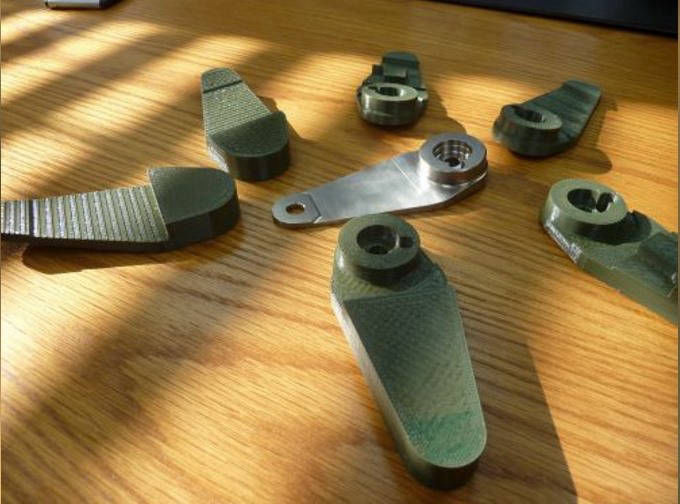
Long before it became fashionable Slabe Machine was rapid prototyping and ‘printing’ parts – partly as a way by which we could better conceptualize new jobs, and partly as a way to reduce errors when processing. 3D printing has become a staple for us in product design, product development, form fit and functionality and aiding in the machining process - and we often times now print what we used to manufacture. Rather than producing a prototype of the proposed finished part or final product, we now grow parts at both early stages and each phase of the machining process to support discussions between engineers, operators and customers about work-holdings / processes, tool clearances, the best practices and methods needed for achieving the most efficient and optimized machining process. Rapid prototyping allows for the quick fabrication of a prototype part using 3d models or cad model in 3d printers. Rapid prototyping process involves adding material layer by layer that can either be machined to replicate the final product .
Rapid prototyping - and there are many forms of it - stereolithography (sla), 3D printing, additive manufacturing, etc. - has helped us enormously in the product development process as well as the conceptualization of the final product, Many aerospace, medical, semiconductor and automotive parts are very complex, often times have intricate interconnecting features and geometries and in order to formulate a manufacturing process, we need a complete understanding of each and every complicated feature on the component. Early stages of quoting involves multiple iterations of design process by design teams before developing a cost-effective manufacturing process towards the end of delivering a successful finished product. 3D printing allows us to easily simulate each step and analyze each process for efficiencies and optimizations.
Most of the times, when we get quotes, we receive CAD (computer-aided design) models from customer and the initial step is to 3d print the part and formulate the design process. Most new products that we’re quoting have very complex geometries and in this competitive manufacturing market, it is very important to develop a cost-effective machining and design processes as well as manufacturing process to make a final product. Rapid Prototyping greatly reduces that amount of time.
The user-interface in printing a part is very simple - as long as we have a CAD model, we can 3D print / ‘grow’ it within few hours. Without rapid prototyping, it would be very difficult and the quoting process would not be as accurate when quoting for a finished end product. Product development would also take considerably longer should one have to make metal parts to demonstrate each of the early stages and final product portion of any part or component.
We additionally use rapid prototyping for our internal product development for various simple machined fixtures (like marking, CMM workholding, Robotic Fixtures, finished product loading of parts into either a machine or inspection device, painting and various other applications).
Our 3d printer use ABS Plastic and can also utilize Rubber materials - the accuracy is roughly +/- .005 and a good surface finish which allows us to 3D print, precise samples of machined parts that accurately represent the final product; and before we begin the machining process and/or the product development process and/or being cutting actual chips using cnc machining processes involving expensive machines that utilize expensive materials, we always make sure we 3D print prototypes and review each and every stage of the process thoroughly with our design, manufacturing and quality teams. The combination of our 3d printer and CAD (computer-aided design) is also critical in developing inspection fixtures for our complex inspection equipment on which positioning the final product can be quite time consuming. 3D printing streamlines this process as well since it’s extremely easy to 3D print a ‘negative’ of an entire final product into which the part can then be placed and easily positioned in a way that’ll allow the part to be presented to the CMM so that the stylus ‘tip’ of CMM can reach around, touch and measure all the necessary features.
Rapid prototyping technology has changed the way we conceptualize jobs, streamlined the entire product development process, aided in both machining and the design process and has allowed us to develop processes and procedures for developing more accurate quotes than ever before.